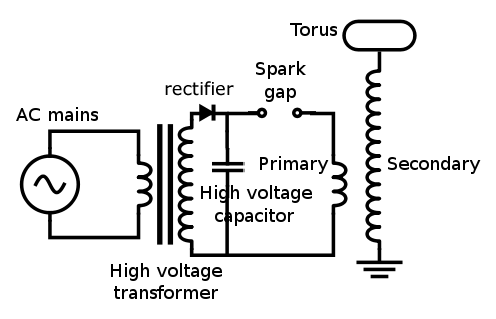Today, we started our first experiment: Salt Water Capacitor Concentration.
Note: links are pictures
Purpose
The purpose of this experiment is to discover the ideal concentration of kosher salt to pure deionized water for peak capacitance for the tesla coil.
Hypothesis
The group's hypothesis was that the highest concentration of salt would be ideal since it is the most conductive.
Variables
Control
Bottle Shape: We chose to use the orange cream soda bottle for this experiment. The bottle was rinsed out and cleaned using deionized water and soap. The soap was rigorously cleansed from the bottle.
Liquid: We chose to use 300 mL ± 1 mL of pure deionized water.
Salt: We chose to use "Diamond Crystal Kosher Salt" as our salt.
Foil: We chose to use "Reynolds Wrap Quality Aluminum Foil" as our foil.
Oil: We chose to use "Arco Supreme Motor Oil" as our oil.
Varied
Concentration: We chose to use four different masses of salt to put into 300 mL of the liquid: 107.7 g, 80.8 g, 53.9 g, and 26.9 g.
Equipment
Today's portion of the experiment involved the following equipment:
- 4 200 mL beakers to hold salt in (120 g each)
- 1 500 mL graduated cylinder
- 4 orange cream soda bottles, cleaned thoroughly
- Aluminum foil
- Kosher salt
- Deionized water
- Weights and mass measuring devices
- Funnel to aid pouring of salt
Events
We focused on preparing and creating the capacitors instead of testing the capacitance. We had split the attendees into different tasks related to this.
The following are the chosen tasks:
- Chemical capacitor theory
- Cleaning bottles
- Placing foil on bottles
- Gathering equipment
- Measuring salt
- Measuring water
- Combining salt and water
Procedure
This is how the day's events went.
- We gathered after finding someone who could unlock the lab.
- Once we obtained the desired equipment, we began drinking the orange cream soda in order to use the bottles.
- We began cleaning the bottles and splitting up the tasks.
- The salt measurers measured four different masses of salt, to a very accurate degree with an electric measuring device:
- Sample 1: 26.9 ± 0.01 g
- Sample 2: 53.9 ± 0.01 g
- Sample 3: 80.8 ± 0.03 g
- Sample 4: 107.7 ± 0.1 g
- The foil wrappers wrapped two layers of aluminum foil over the bottle, leaving about 1 cm of space from the top to prevent conductivity from the foil to the cap.
- Two people left to purchase the following items for later in the experiment:
- Motor oil (30W non-detergent)
- Tub, plastic (or other container; may need to hold partial vacuum)
- Electrical tape
- 1/4 x 6" galvanized carriage bolts (1 per bottle)
- 1/4" nuts (2 per bolt)
- Funnel
- While the two people left to purchase goods, we poured 300 mL of deionized water into the two prepared bottles and put into bottle 1 the sample 1 salt and into bottle 2 the sample 2 salt.
We ran out of time to continue the experiment, which means that we should finish up creating the capacitors next week and begin measuring capacitance.
Meeting Minutes
Today, we did not discuss a lot about the future of the project compared to last week. The main topic of discussion was the capacitors. We decided to use motor oil to seal the salt water off. This prevents the creation of ozone caused by ionized salt water. Also, we were discussing putting the six planned capacitors into a vat or container of salt water with similar concentration. This, according to a theoretical discussion, would enhance the capacitance of the entire six pack. We may need to experiment with this. We also discussed the possibility of removing as much air as possible from our capacitor container to prevent disruption like particles landing in our solution. We do not think a total vacuum would be appropriate, due to the extreme pressure differences and structural integrity.
Attendees
· Dan
· Eric
· Jodi
· Joe
· Matt
· Nathaniel
· Robert

